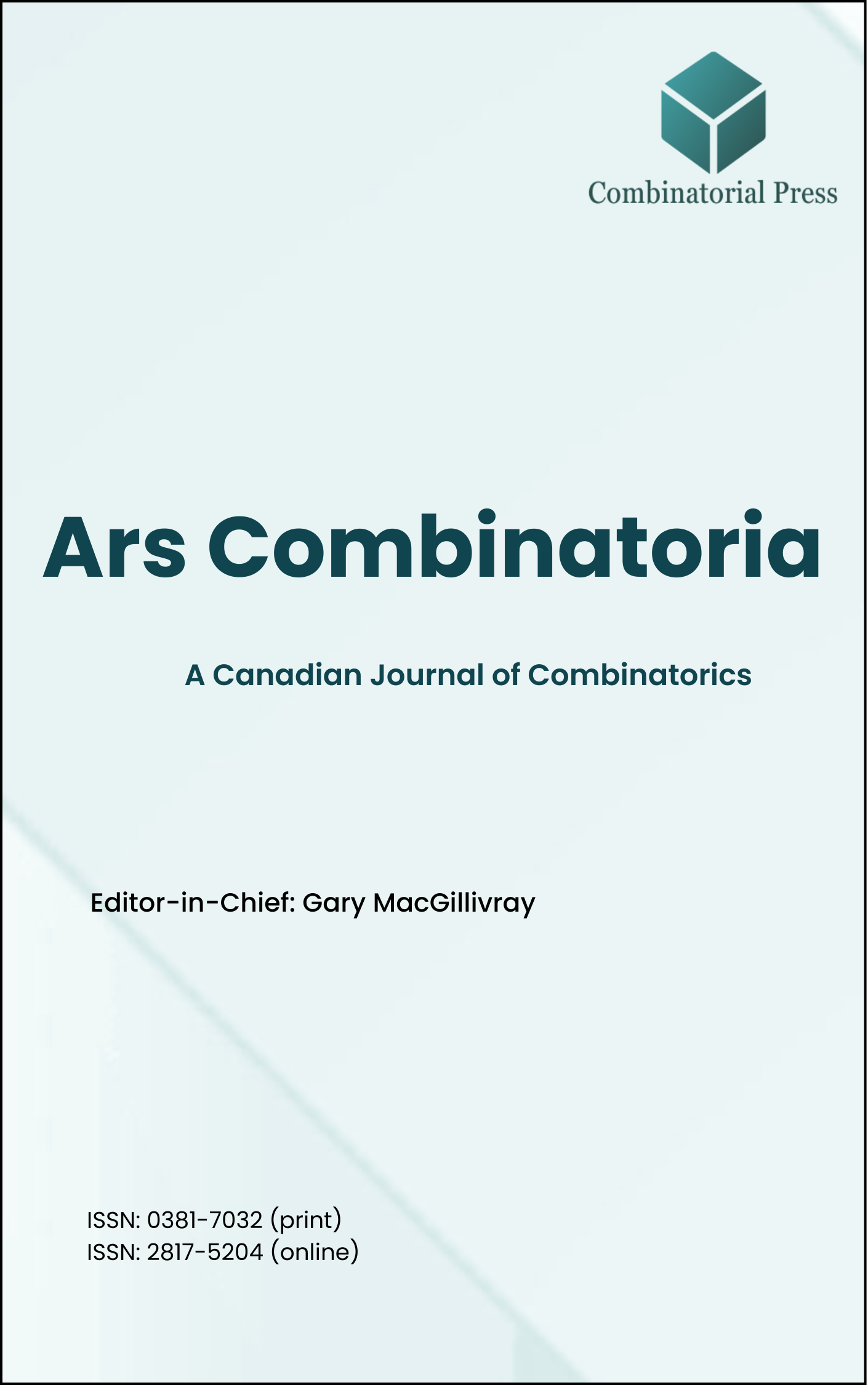
Ars Combinatoria
ISSN 0381-7032 (print), 2817-5204 (online)
Ars Combinatoria is the oldest Canadian Journal of Combinatorics, established in 1976. The journal is dedicated to advancing the field of combinatorial mathematics through the publication of high-quality research papers. From 2024 onward, it publishes four volumes per year in March, June, September and December. Ars Combinatoria has gained recognition and visibility in the academic community and is indexed in renowned databases such as MathSciNet, Zentralblatt, and Scopus. The Scope of the journal includes Graph theory, Design theory, Extremal combinatorics, Enumeration, Algebraic combinatorics, Combinatorial optimization, Ramsey theory, Automorphism groups, Coding theory, Finite geometries, Chemical graph theory but not limited.
Information Menu
- Research article
- Full Text
- Ars Combinatoria
- Volume 132
- Pages: 231-239
- Published: 30/04/2017
Motzkin posed the problem of finding the maximal density
- Research article
- Full Text
- Ars Combinatoria
- Volume 132
- Pages: 219-229
- Published: 30/04/2017
For vertices
- Research article
- Full Text
- Ars Combinatoria
- Volume 132
- Pages: 203-217
- Published: 30/04/2017
A hypergraph is a useful tool to model complex systems and can be considered a natural generalization of graphs. In this paper, we define some operations of fuzzy hypergraphs and strong fuzzy
- Research article
- Full Text
- Ars Combinatoria
- Volume 132
- Pages: 193-201
- Published: 30/04/2017
Let
- Research article
- Full Text
- Ars Combinatoria
- Volume 132
- Pages: 183-192
- Published: 30/04/2017
In 1972, Chvatal and Erdős showed that the graph
- Research article
- Full Text
- Ars Combinatoria
- Volume 132
- Pages: 171-181
- Published: 30/04/2017
The coloring number
- Research article
- Full Text
- Ars Combinatoria
- Volume 132
- Pages: 159-169
- Published: 30/04/2017
For any vertex
- Research article
- Full Text
- Ars Combinatoria
- Volume 132
- Pages: 147-157
- Published: 30/04/2017
Many authors define certain generalizations of the usual Fibonacci, Pell, and Lucas numbers by matrix methods and then obtain the Binet formulas and combinatorial representations of the generalizations of these number sequences. In this article, we firstly define and study the generalized Gaussian Fibonacci numbers and then find the matrix representation of the generalized Gaussian Fibonacci numbers and prove some theorems by these matrix representations.
- Research article
- Full Text
- Ars Combinatoria
- Volume 132
- Pages: 137-145
- Published: 30/04/2017
Given two sets
3\) is the characteristic of
- Research article
- Full Text
- Ars Combinatoria
- Volume 132
- Pages: 127-135
- Published: 30/04/2017
A proper edge-coloring of a graph
We also give a negative answer to the question of Axenovich on the outerplanar triangulations.





